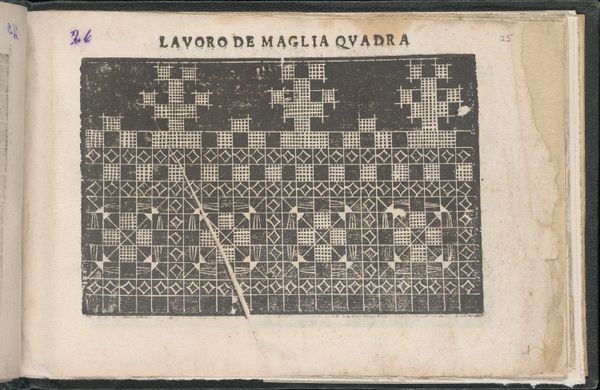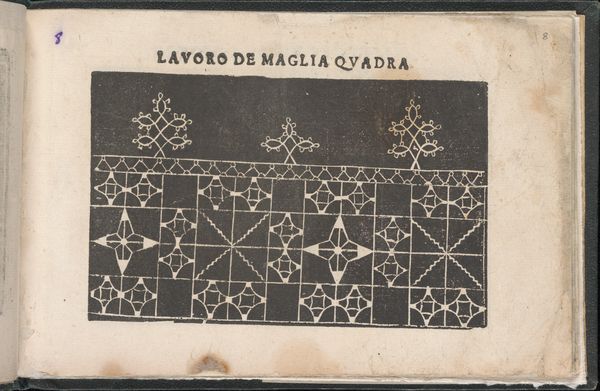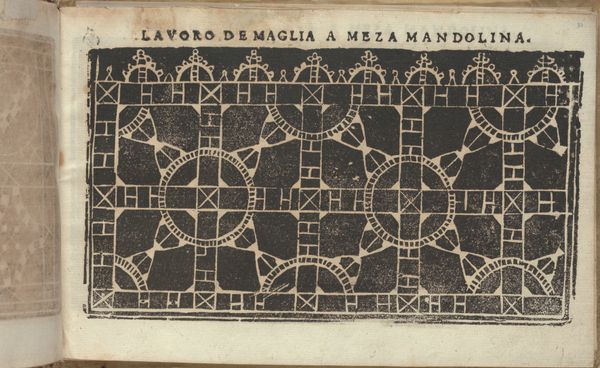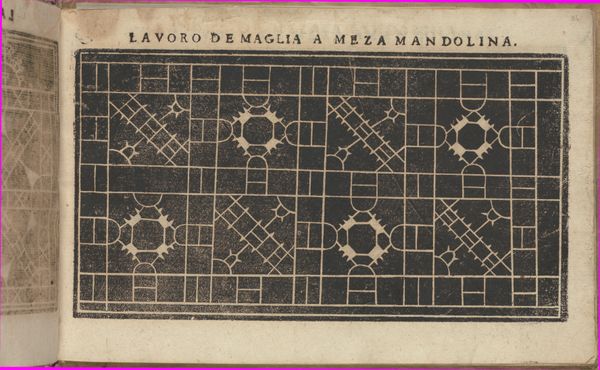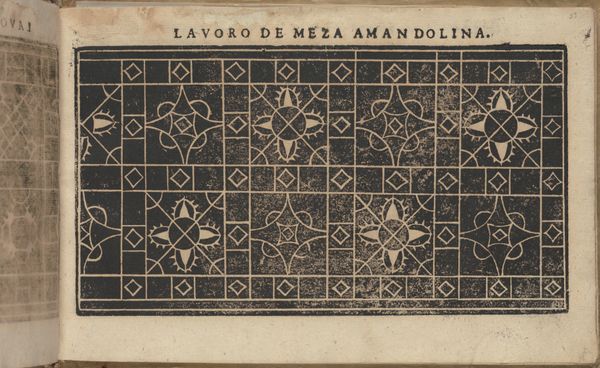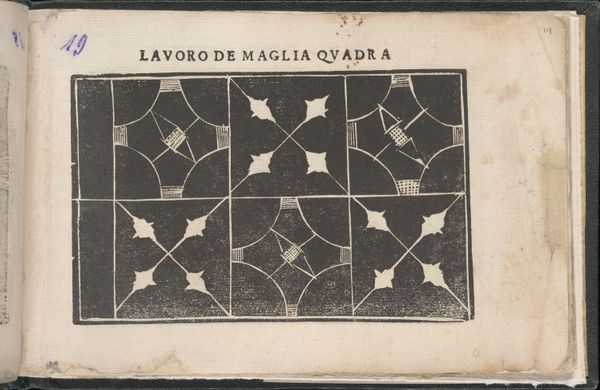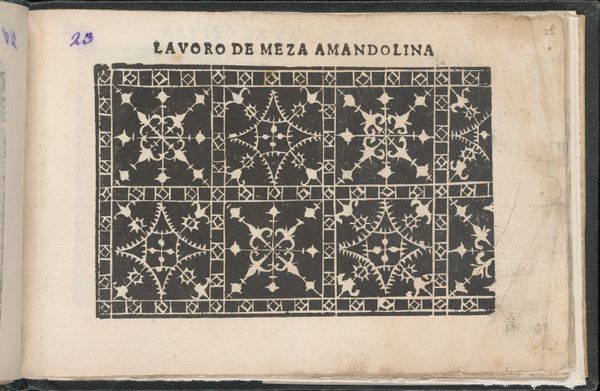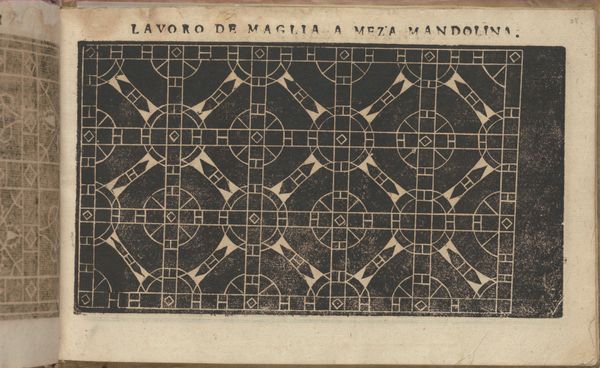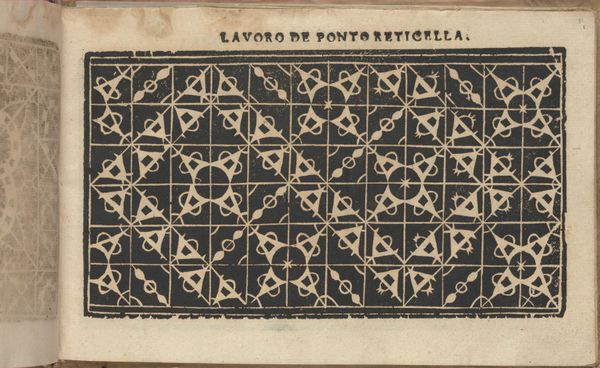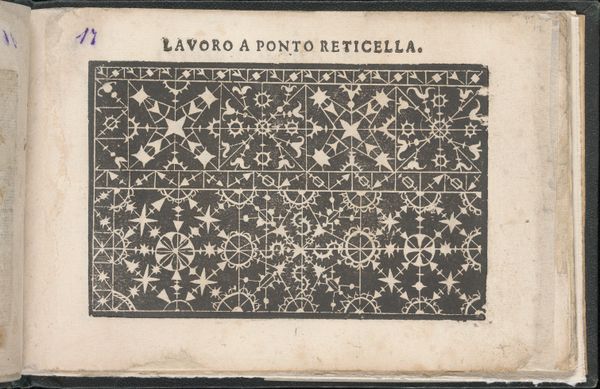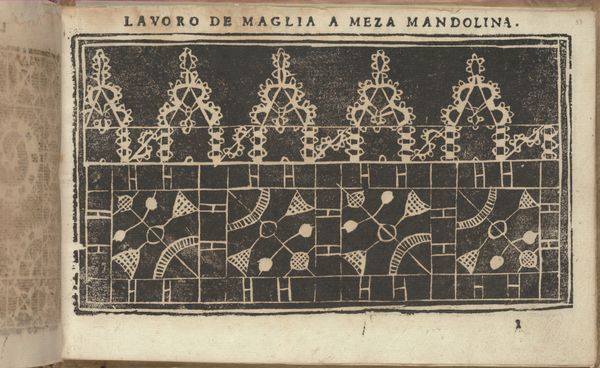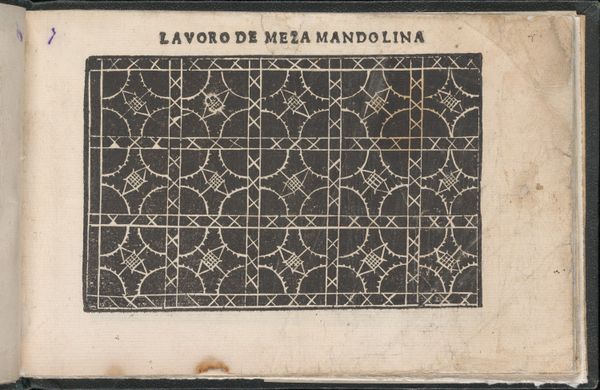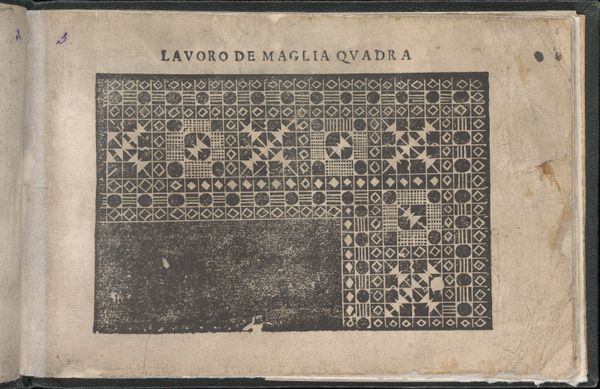
Gemma pretiosa della virtuose donne, page 6 (recto) 1625
drawing, graphic-art, print, engraving
drawing
graphic-art
pattern
11_renaissance
decorative-art
engraving
Dimensions: Overall: 5 5/16 x 7 11/16 in. (13.5 x 19.5 cm)
Copyright: Public Domain
Editor: So, this is "Gemma pretiosa della virtuose donne, page 6 (recto)" created in 1625 by Isabella Catanea Parasole. It's an engraving, part of a series of pattern designs. It feels almost like looking at a very early computer punch card! What can you tell me about this work? Curator: It’s fascinating, isn't it? This wasn't just decoration. Manuals such as this, produced by women for women, were central to female economies in the Renaissance and early modern periods. Parasole's designs are an active contribution to the professionalization of women, and this engraving serves as an assertion of women's intellectual and economic power at a time when they were largely excluded from those spheres. It speaks to ideas surrounding production, knowledge sharing, and access. Does that resonate with you? Editor: Definitely. I hadn't considered it as part of economic history, or women's history. How was something like this used? Curator: These pattern books served as vital resources for women who worked in textile production, embroidery, and lacemaking. It provided designs and inspired creativity in media available to women in their home at a fraction of the price of an artisan. In a way, women became authors in their own right and the printing press was pivotal in facilitating female artistic expression by creating accessible and easily distributable materials for everyone. What do you make of the grid itself, the organization of the pattern? Editor: I see how the grid allows for both repetition and variation, almost like a template. Curator: Exactly! It also reflects a larger intellectual trend toward systematization and rationalization. What strikes you most about that, given the context of gender roles at the time? Editor: Thinking about women gaining some degree of agency via this type of work while so much else remained restricted is interesting. Curator: Precisely. It demonstrates how seemingly "domestic" arts could be a site of subtle resistance and economic empowerment. Thank you for allowing me to look at this today. It helps solidify my approach as well.
Comments
No comments
Be the first to comment and join the conversation on the ultimate creative platform.

